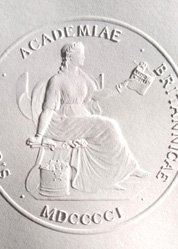Published in British Academy Review, No. 32 (Spring 2018).
The print version of this article can be downloaded as a PDF file.
In March 1906, just a few years after the British Academy’s foundation, the Academy’s Council decided that it was desirable to have a seal, so that the investment of Academy capital could be authorised ‘under Common Seal’. Accordingly, it was agreed that two Fellows of the British Academy should form a Sub-Committee ‘to report upon the design for a seal’ (Council Minutes, 14 March 1906). The two Fellows were: Sir Edward Maunde Thompson, Director and Principal Librarian of the British Museum; and Sir William Anson MP, who had until recently been the first Parliamentary Secretary to the Board of Education.
How to capture in visual form the character of the ‘British Academy for the Promotion of Historical, Philosophical and Philological Studies’? Someone else had already done this – at the Academy’s expense – within a month of the new body receiving its Royal Charter in August 1902. On 3 September 1902, Punch magazine published a cartoon in which ‘Scientific Literature’ – with gown and mortar board – mounts the steps into the British Academy, while ‘Poetry, Drama, and Romance’ are sadly excluded behind iron railings.
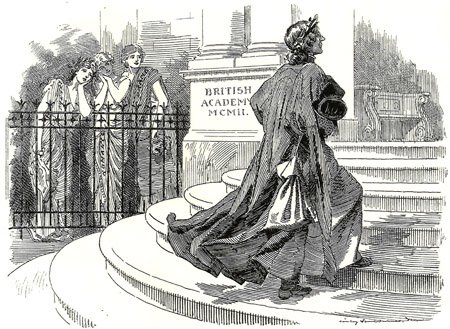
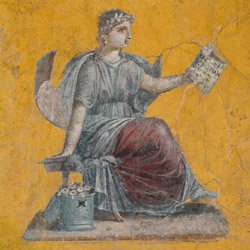
ΚΛΕΙШ ΙСΤΟΡΙΑΝ
which perhaps can be translated broadly as ‘Clio [invented] inquiry’ [note 1].
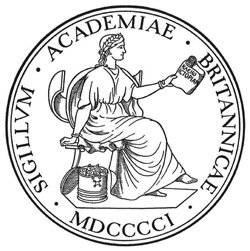
Around Clio were added the words ‘Sigillum Academiae Britannicae’ (Seal of the British Academy).
And a date was added: ‘MDCCCCI’ (1901). The ‘proposed Fellows of the British Academy’ had indeed met for the first time as such on 17 December 1901. But, as has already been mentioned, the Academy did not receive its Royal Charter until August 1902 [note 2], and 1902 would later be regarded as the more important date in the Academy’s foundation history (key anniversary celebrations were held in 1927, 1952 and 2002). So the presence of the 1901 date on the seal would be rather confusing for later generations.
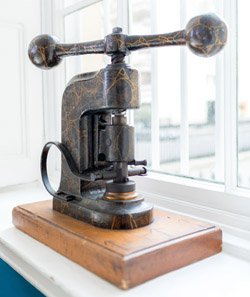
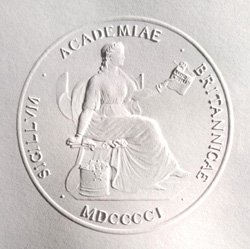
The Academy’s press appears to be similar to that currently used by the Government of the United States for impressing wafers attached to government documents. That press, called ‘The Great Seal’, was made around the same time, in 1903-5, and is kept in the Department of State. (Apparently it was used some two to three thousand times during 2009.) [note 3]
The first occasion for the use of the British Academy’s new seal was in connection with the drawing up of a Trust document in respect of the extraordinarily generous gift of £10,000 from Miss Constance Schweich to establish a Fund in the name of her father, Leopold Schweich [note 4]. In October 1907, a ‘Committee on the Drafting of the Schweich Trust’ made specific recommendations on the prudent use of the seal in such circumstances [note 5], and at the meeting of Council in November, ‘the affixing of the Seal of the Academy to the Declaration of Trust of the Schweich Fund was authorised’ (Council Minutes, 6 November 1907).
In a modest extension of its use, the seal was reproduced as a printed image to adorn a number of ceremonial scrolls produced by the British Academy to mark significant occasions. For example, scrolls were sent to King George V both to salute his accession in 1910 and to congratulate him on his 25th anniversary in 1935.
Logo
But it was not until the Academy marked its own 50th anniversary in 1952 that the seal image became more generally adopted as the Academy’s logo. In spite of the confusing ‘1901’ date, the seal was embossed in gold on the menu card for the anniversary dinner, and printed on the cover of Sir Frederic Kenyon’s commemorative booklet on The British Academy: The First Fifty Years. And from that moment on, perhaps as the Academy had an enhanced sense of its own history and identity, the seal began to appear on an increasing range of official literature issued by it – and became established as the Academy’s emblem.
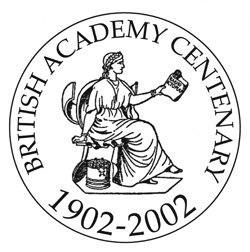
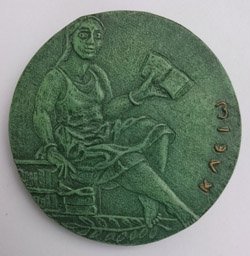
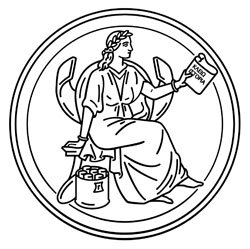
The seal press of the British Academy has not been used for the formal authentication of a document for several years. And as the Academy conducts another review of its ‘brand’, what place may Clio still have as part of the Academy’s future visual identity?
‘From the Archive’ research by Karen Syrett, British Academy Archivist and Librarian. Text by James Rivington.
1. We are grateful to Alan Griffiths, Senior Honorary Research Fellow, University College London, for his suggestions about the Clio fresco.
2. See ‘A Documentary Account of the Foundation of the British Academy’, in The British Academy 1902-2002: Some Historical Documents and Notes (2002).
3. We are grateful to John Cherry for this information. Along with other members of the Board of Sigillvm, he inspected the British Academy’s seal press in December 2017. The Board also visited the Society of Antiquaries of London which has a similar type of screw press, although that is thought to date from the 18th century.
4. For the history of this, see Graham Davies, ‘Leopold Schweich and his Family’, British Academy Review, 12 (January 2009), 53-57.
5. The recommended requirement that three authorised people should participate in the use of the British Academy’s seal continues to be reflected in the Academy’s Bye-Laws. These stipulate that ‘every deed or writing to which the Common Seal of the Academy is to be affixed shall be passed and sealed in Council’ – except in case of urgency, when the sealing can be done in the presence of the President or a Vice-President or the Treasurer, and another member of the Council, and the Chief Executive. Anecdotal evidence suggests that this requirement that three authorised people should actually be present to witness the sealing has sometimes been awkward to meet in the past, and there have been occasions when there was an acceptance that one or other of them was present ‘in spirit’.
How are we doing? Your feedback is important to help us shape future issues of the British Academy Review.
To provide reader feedback, please visit www.britishacademy.ac.uk/british-academy-review-feedback
